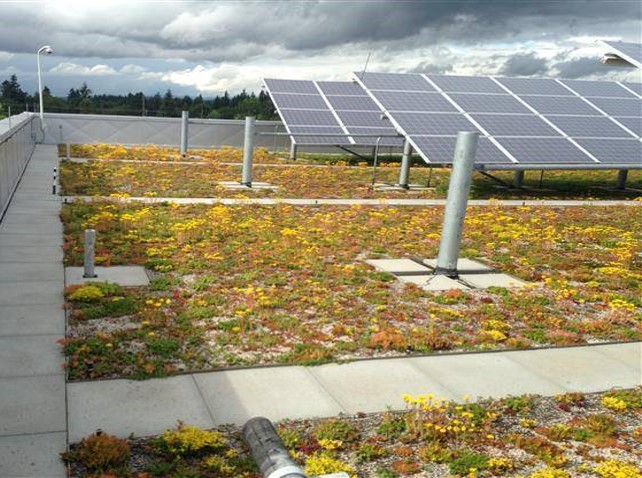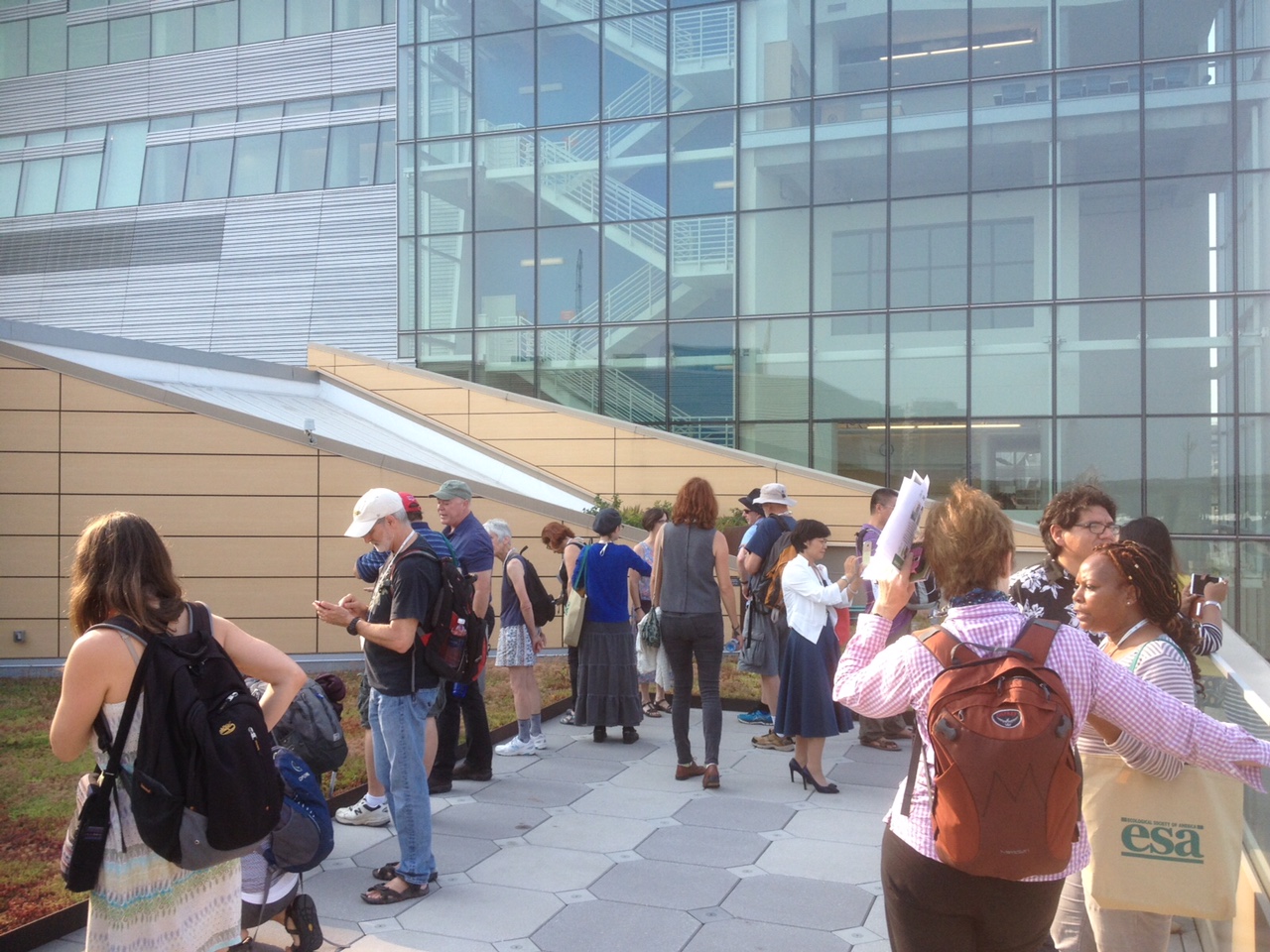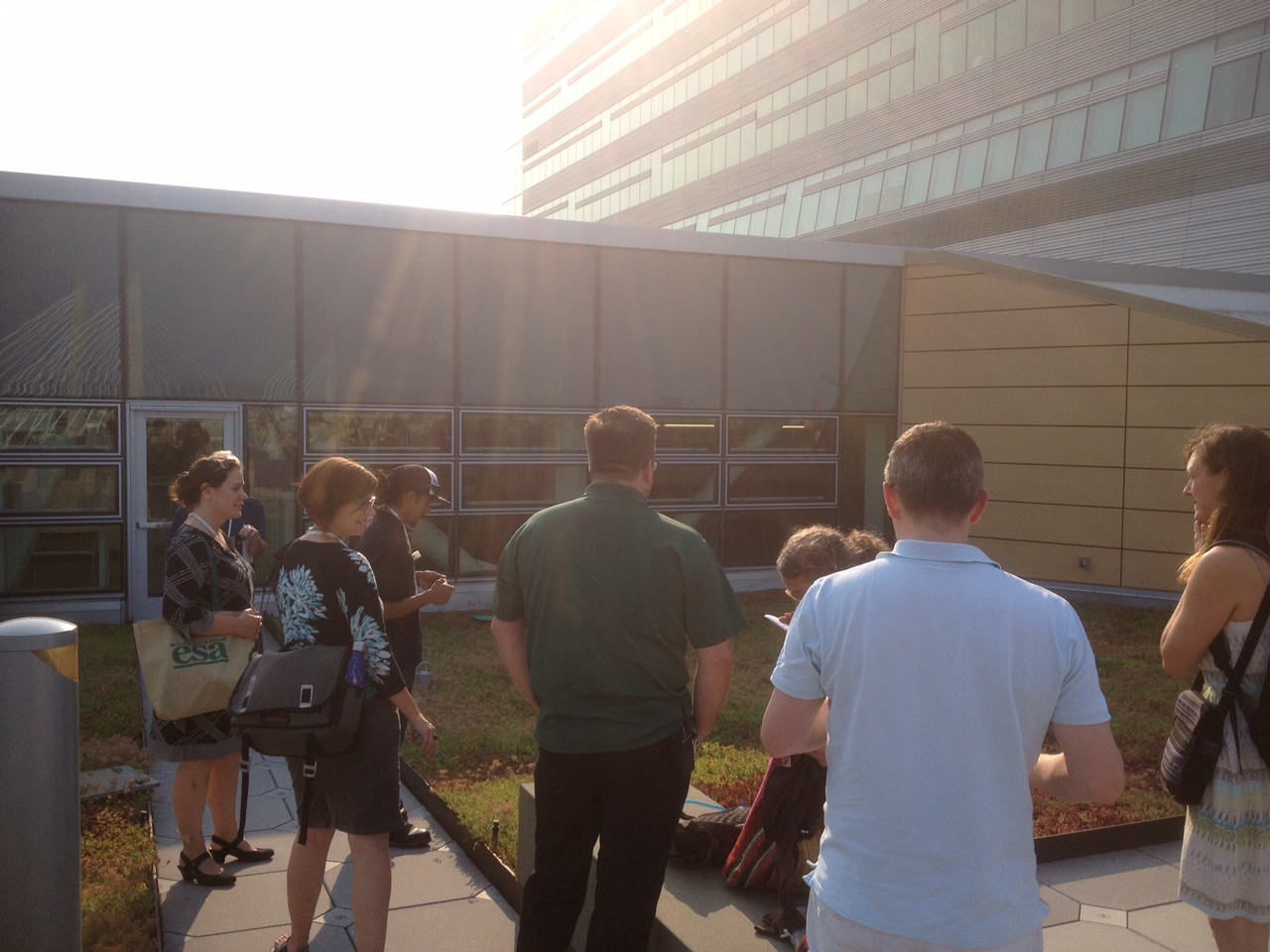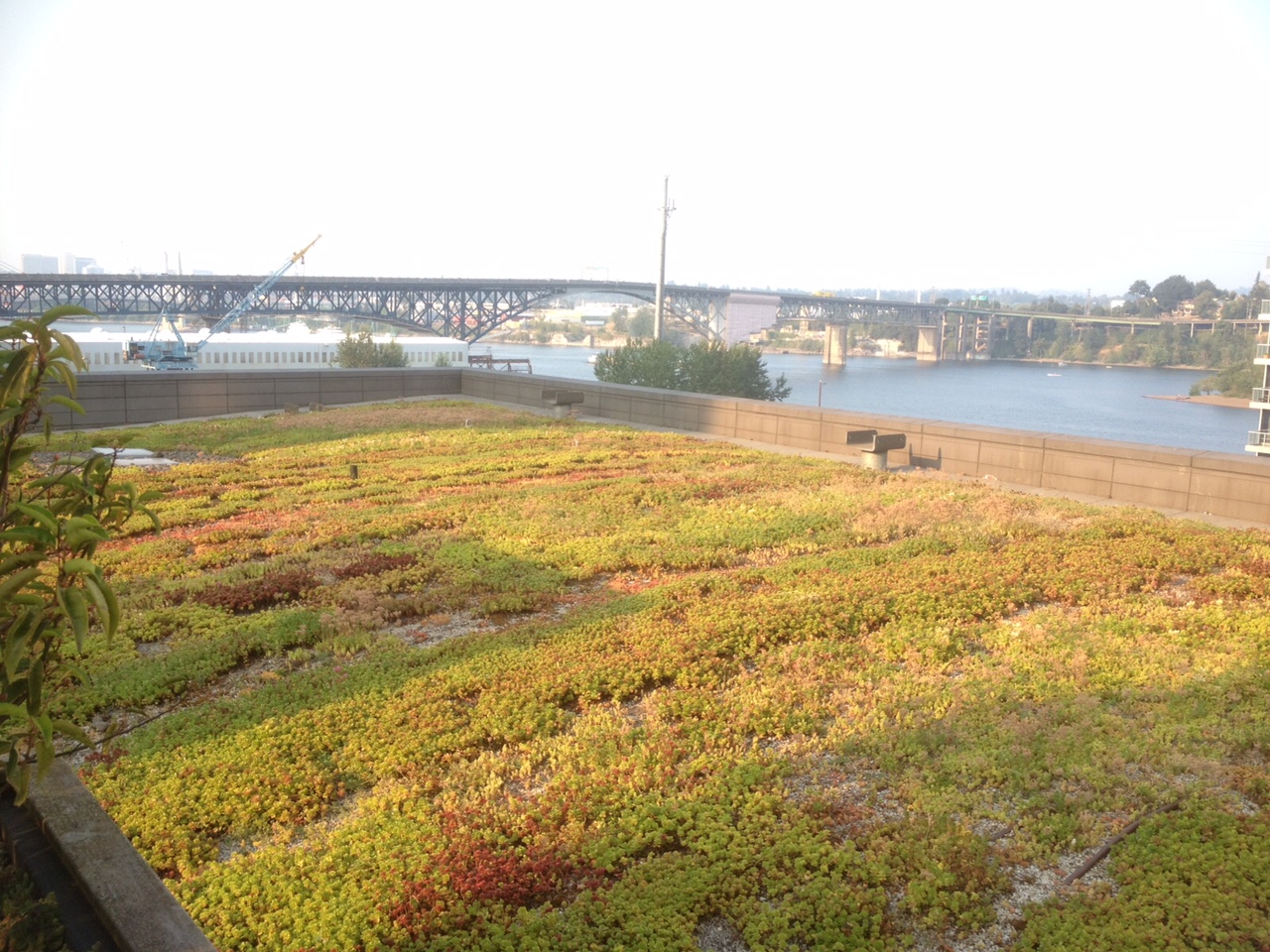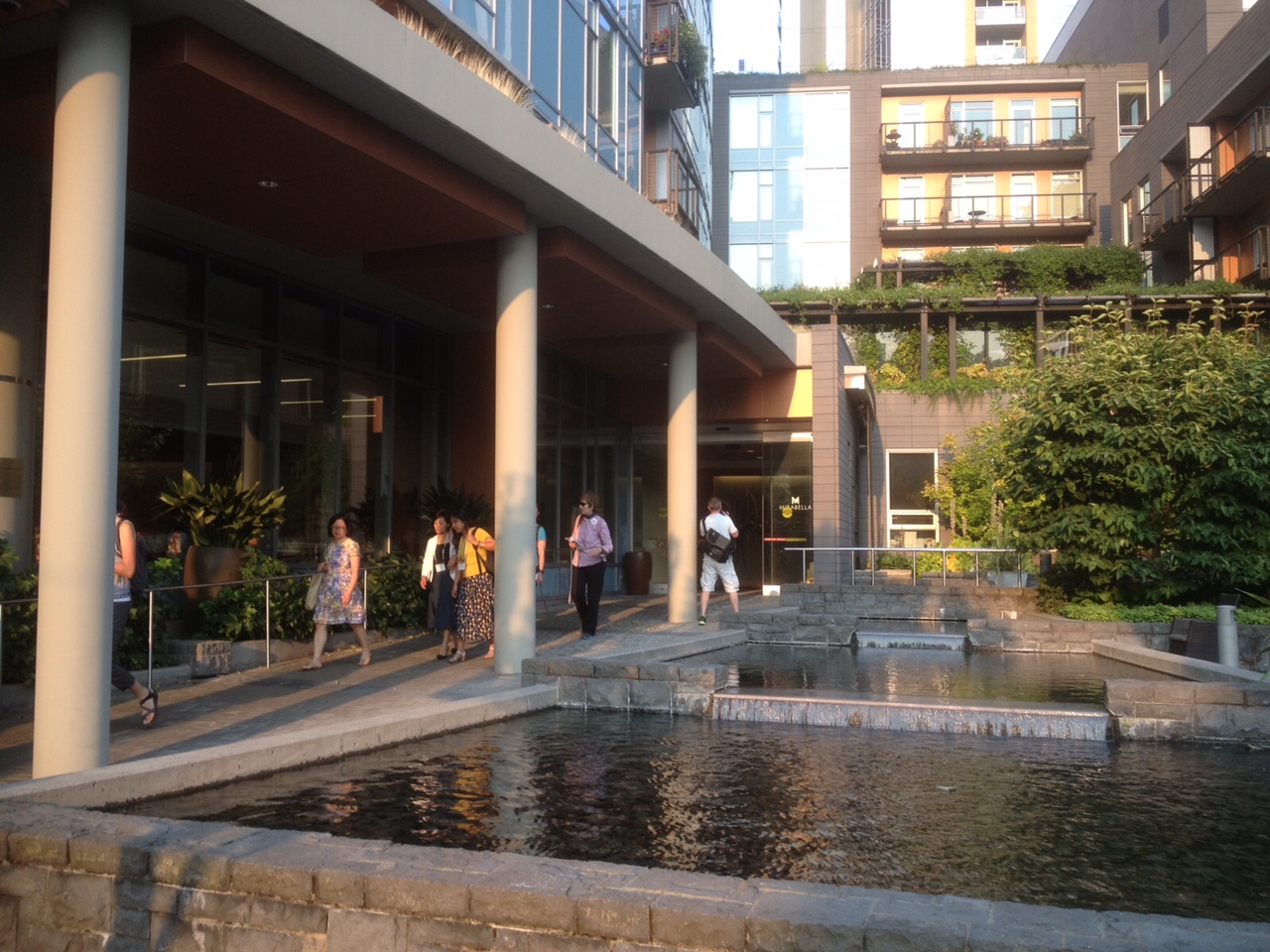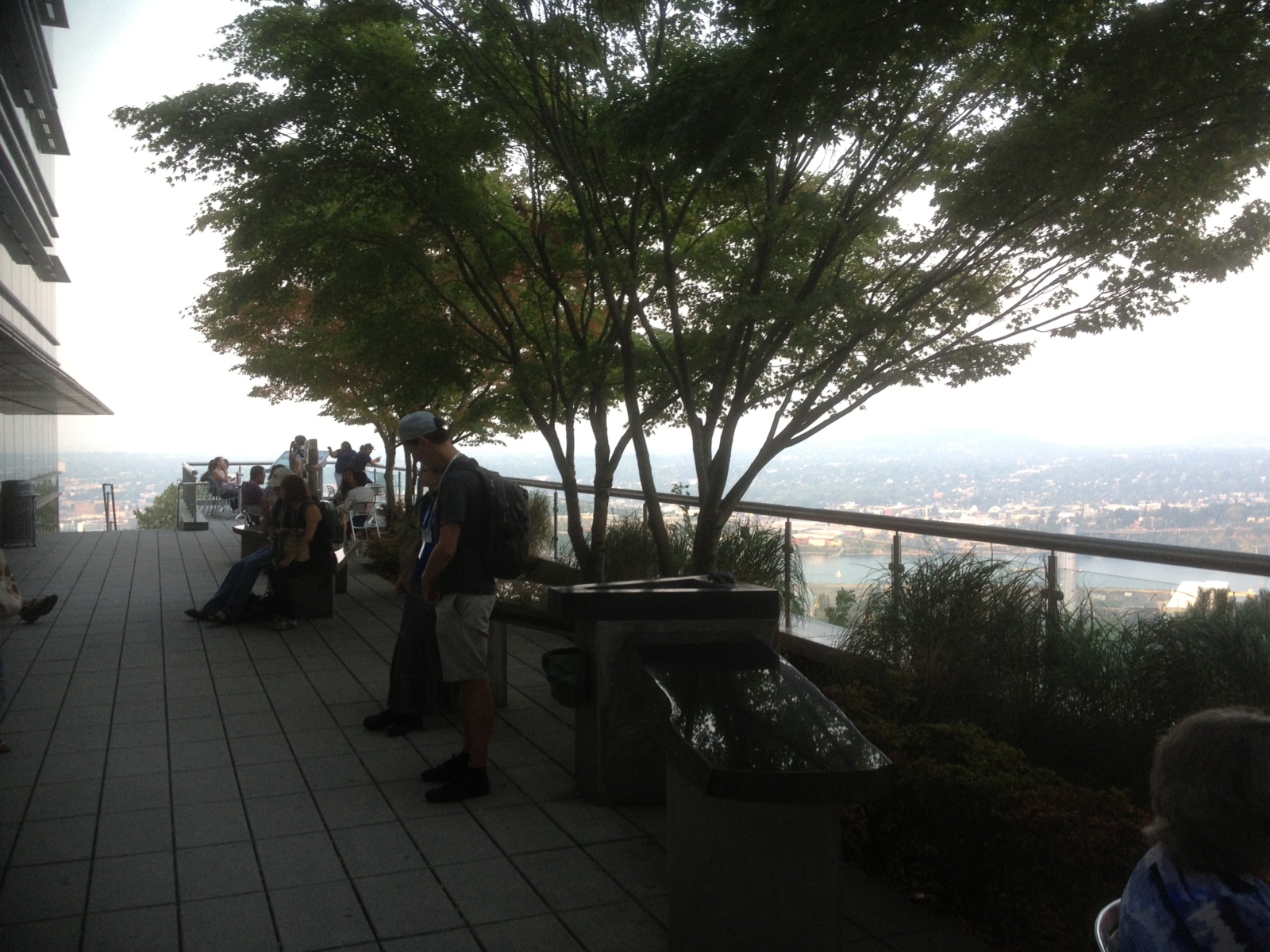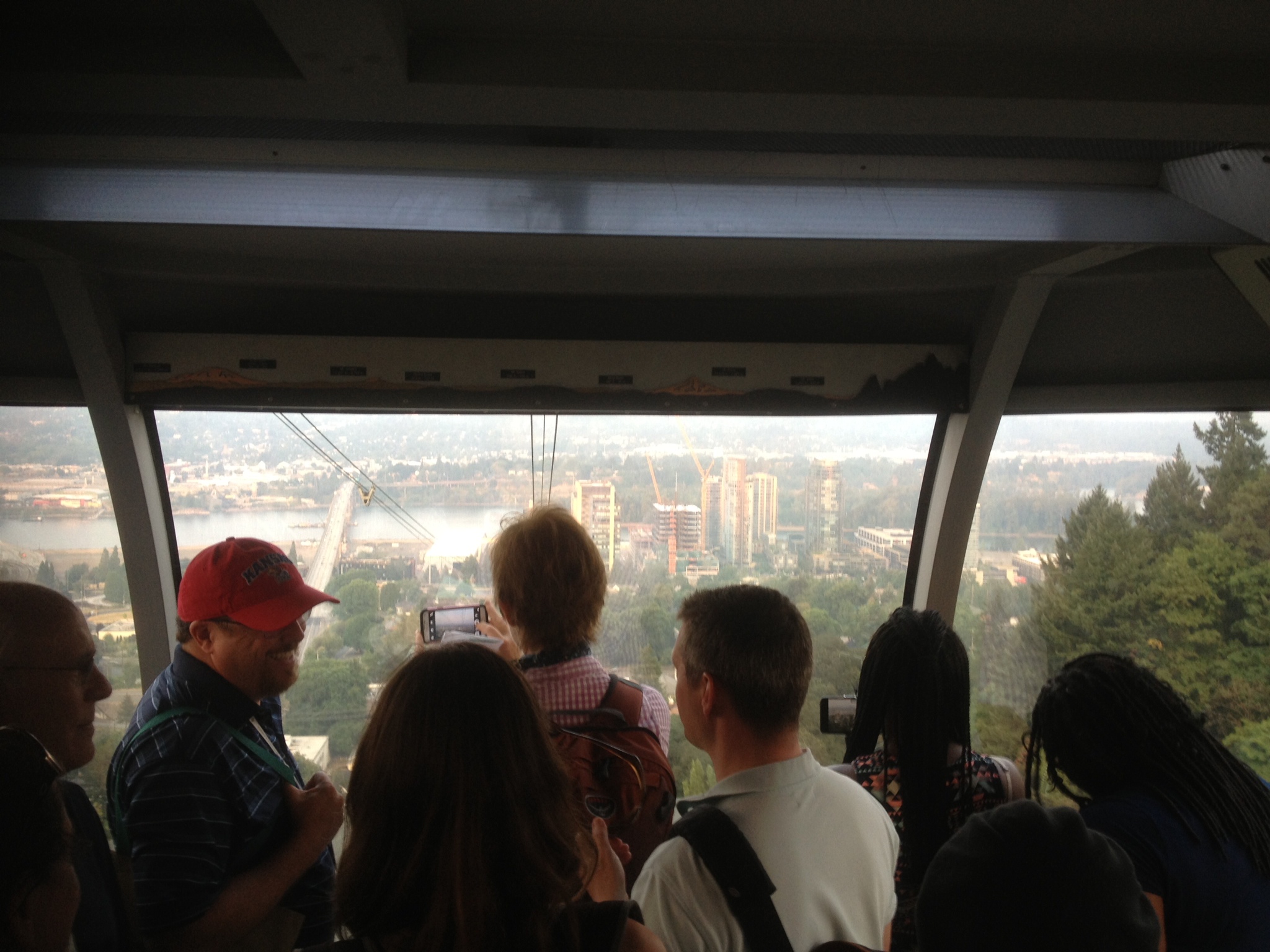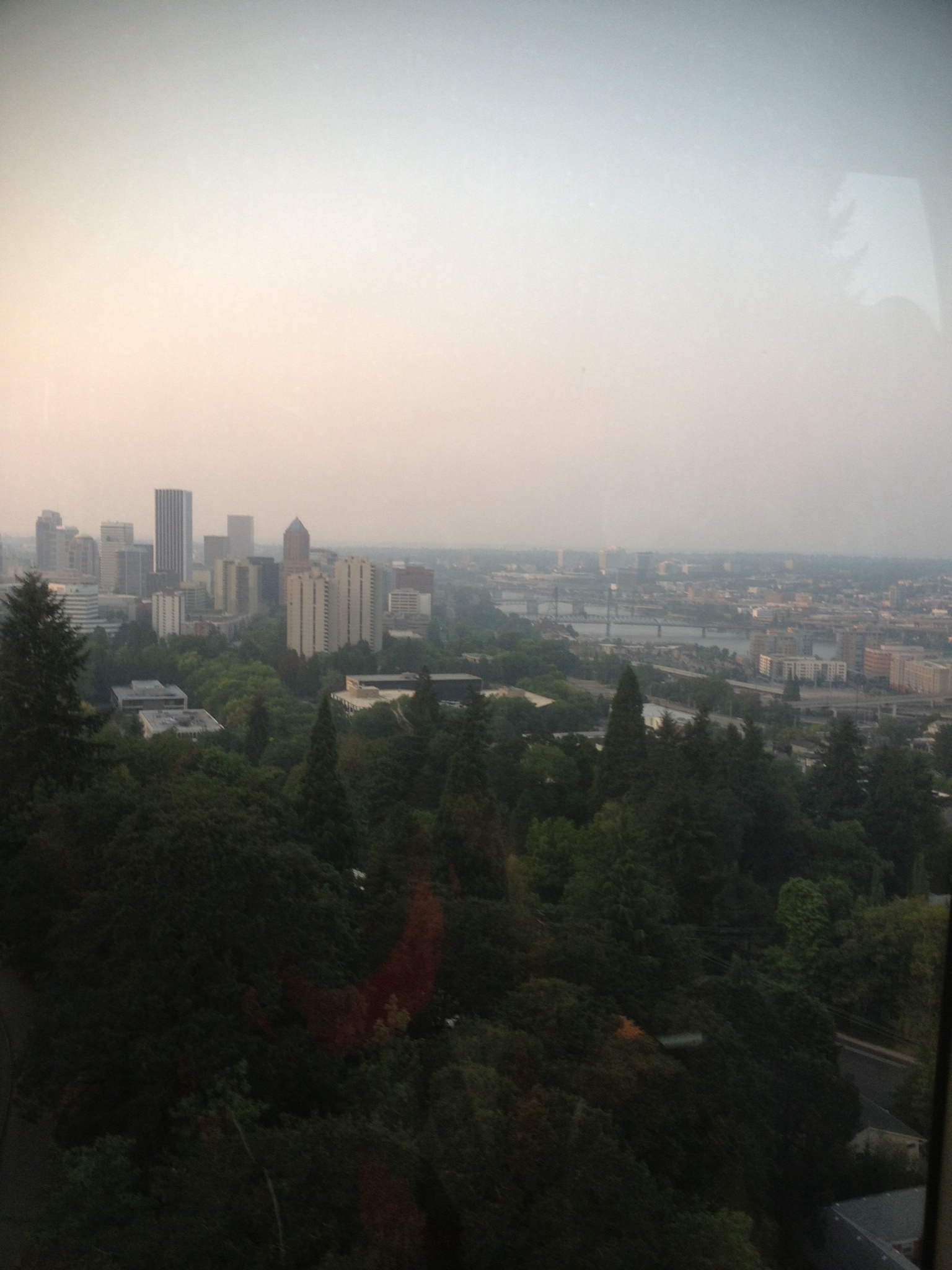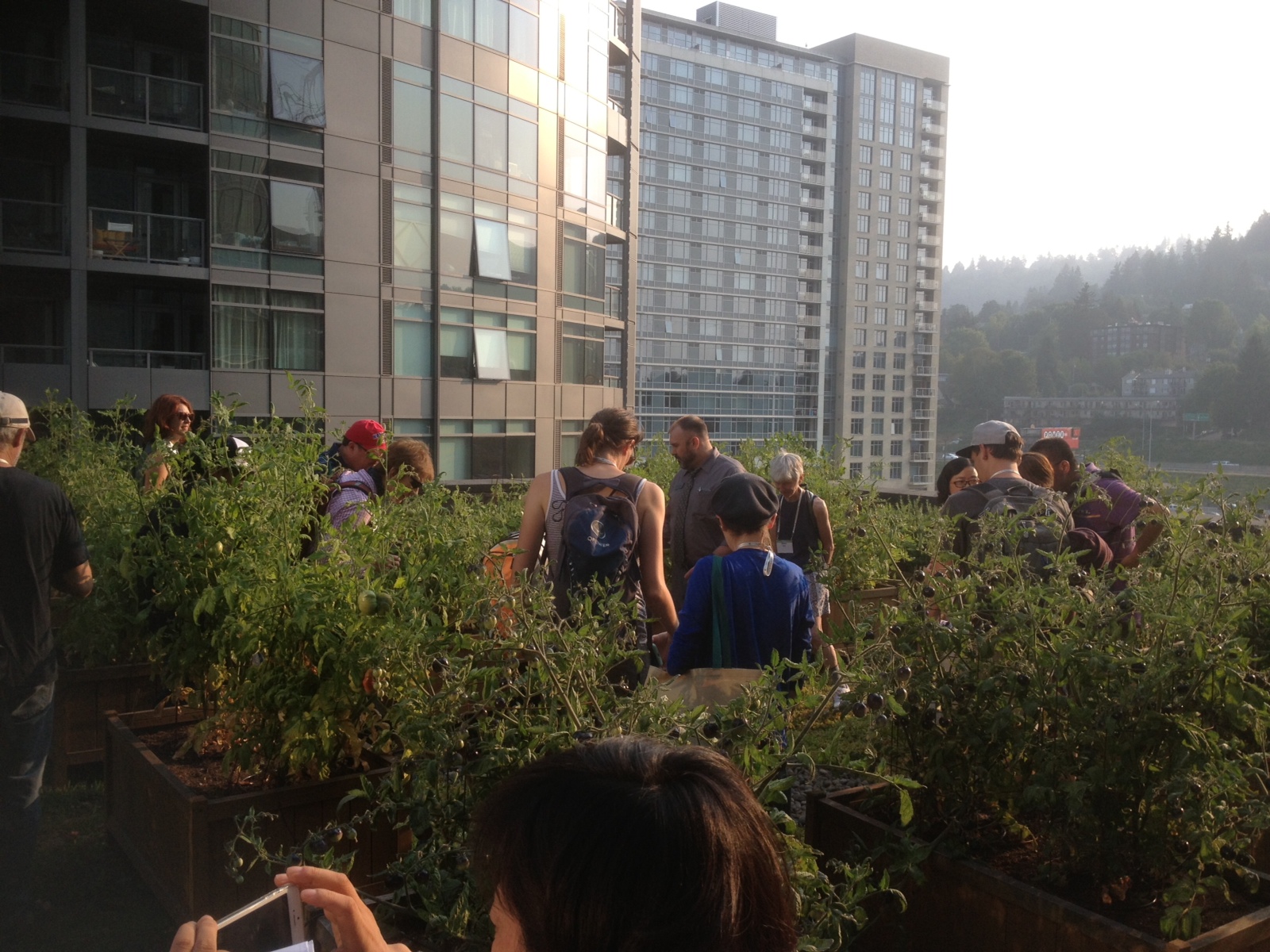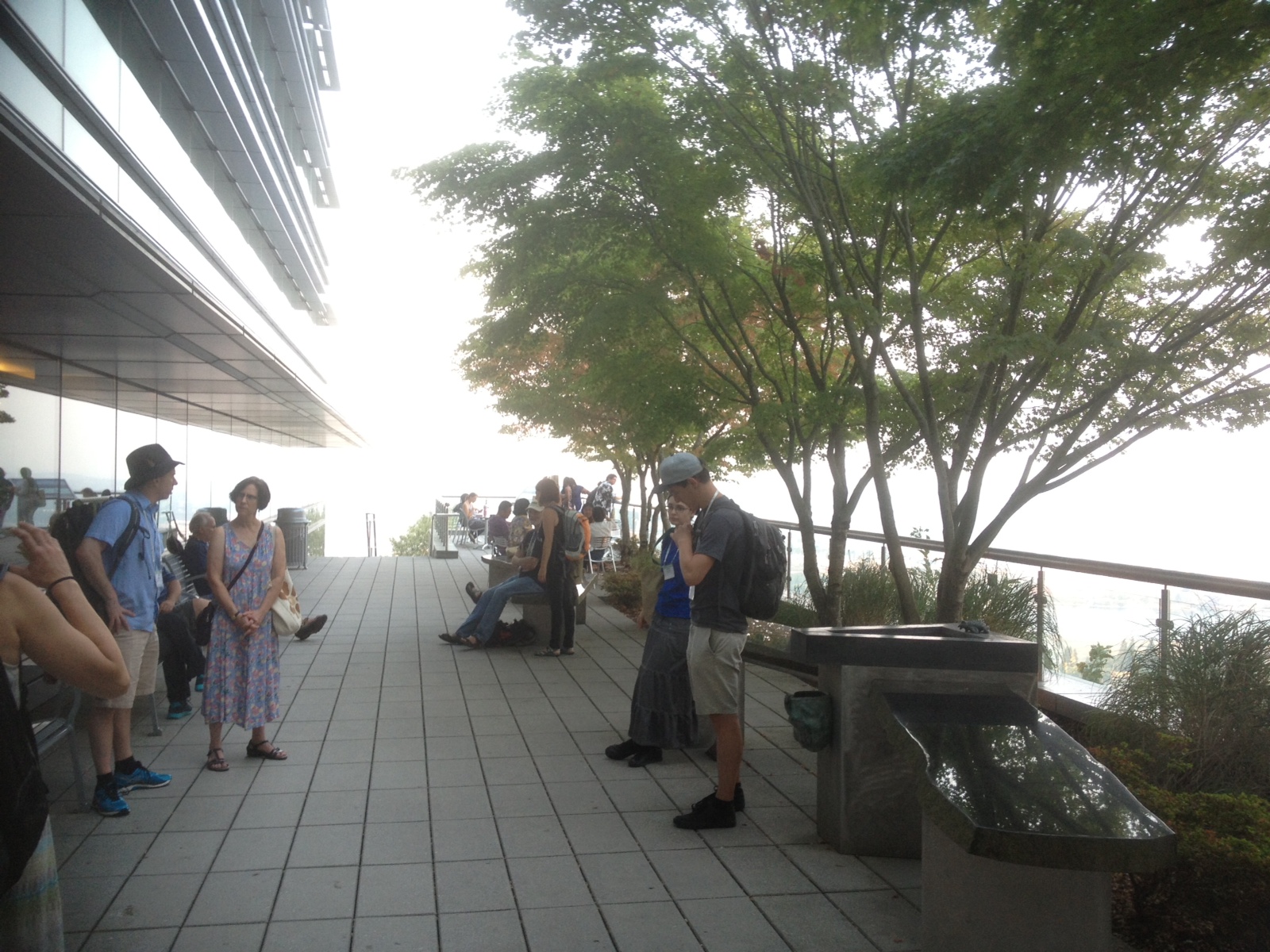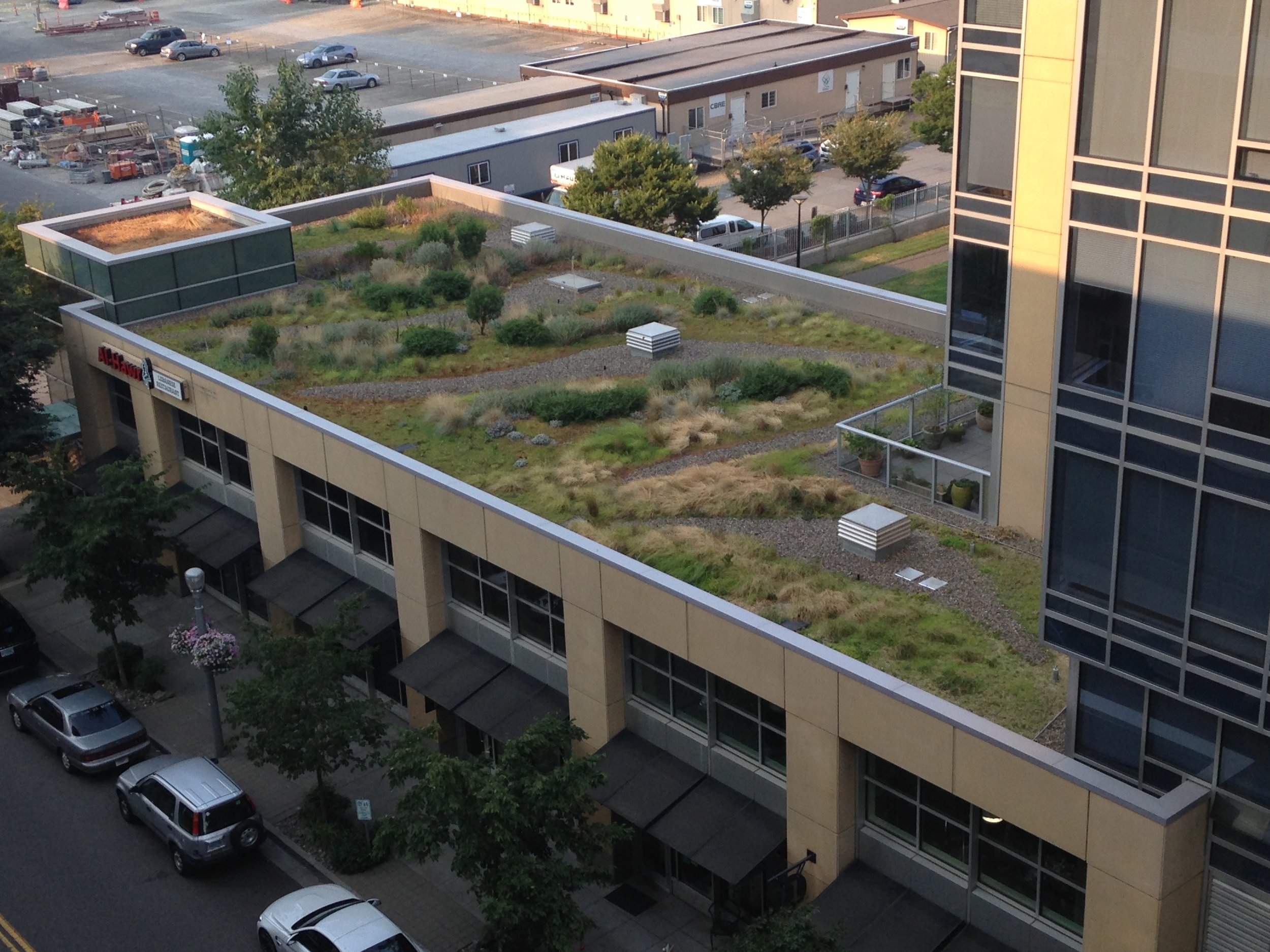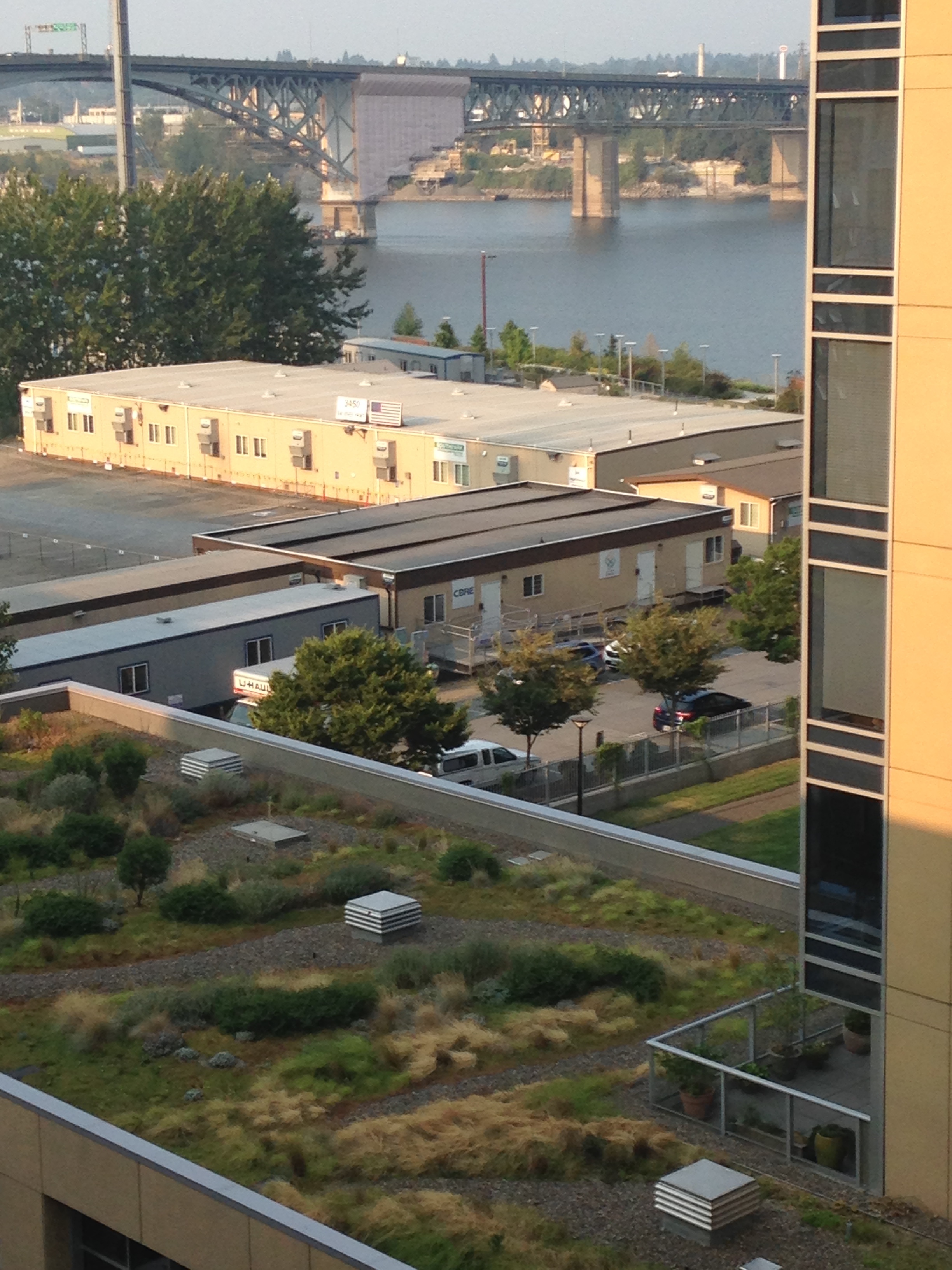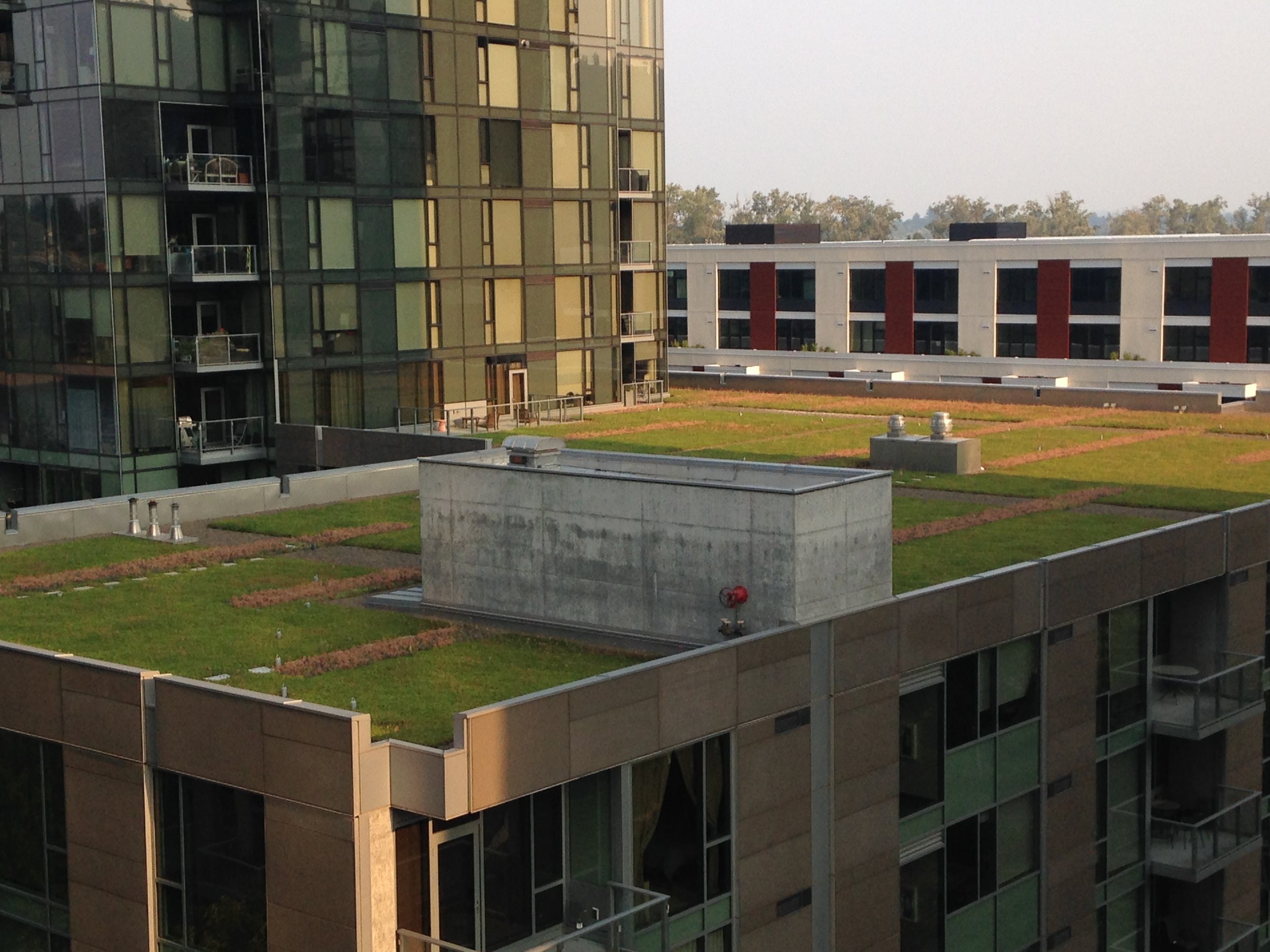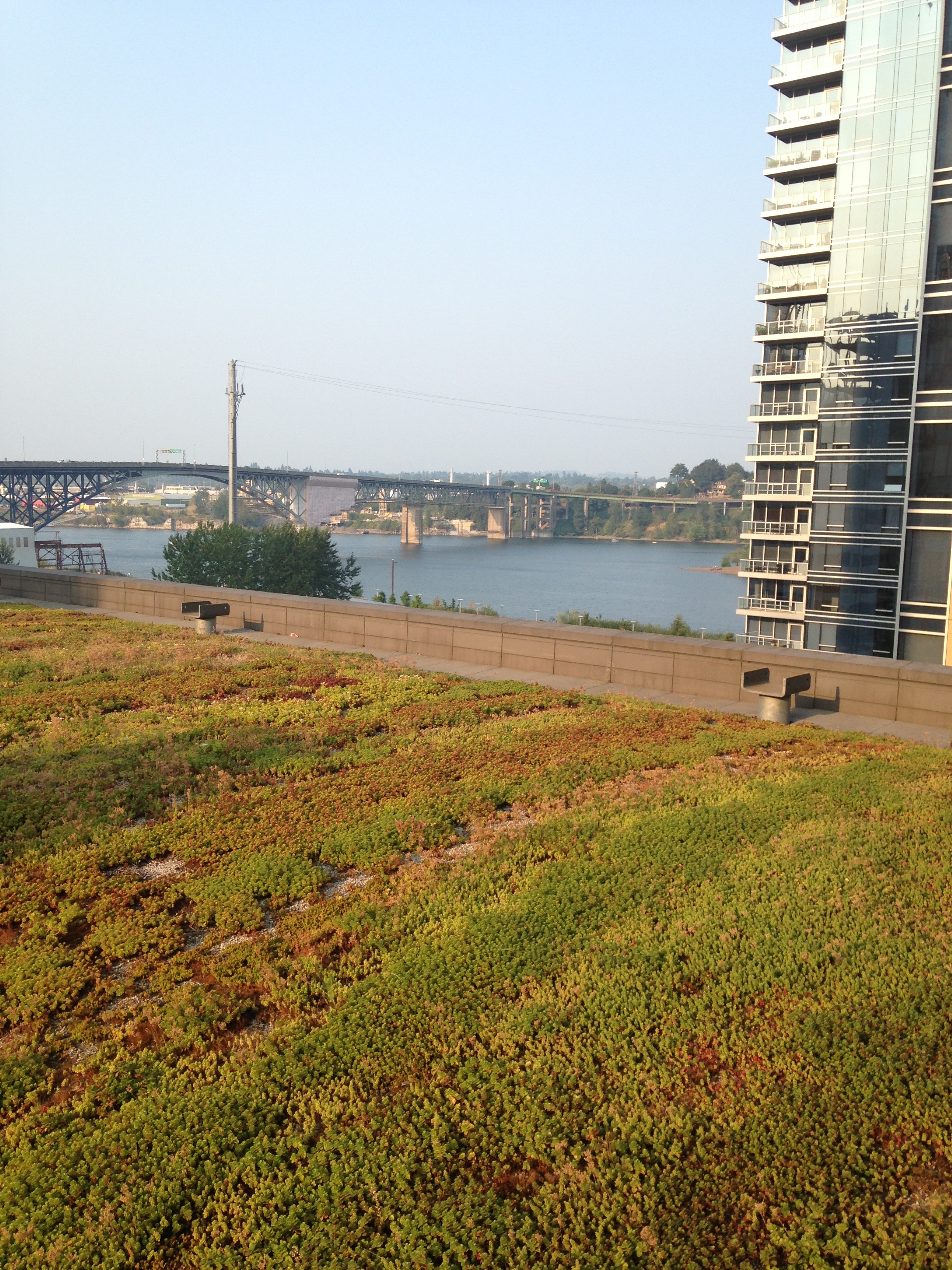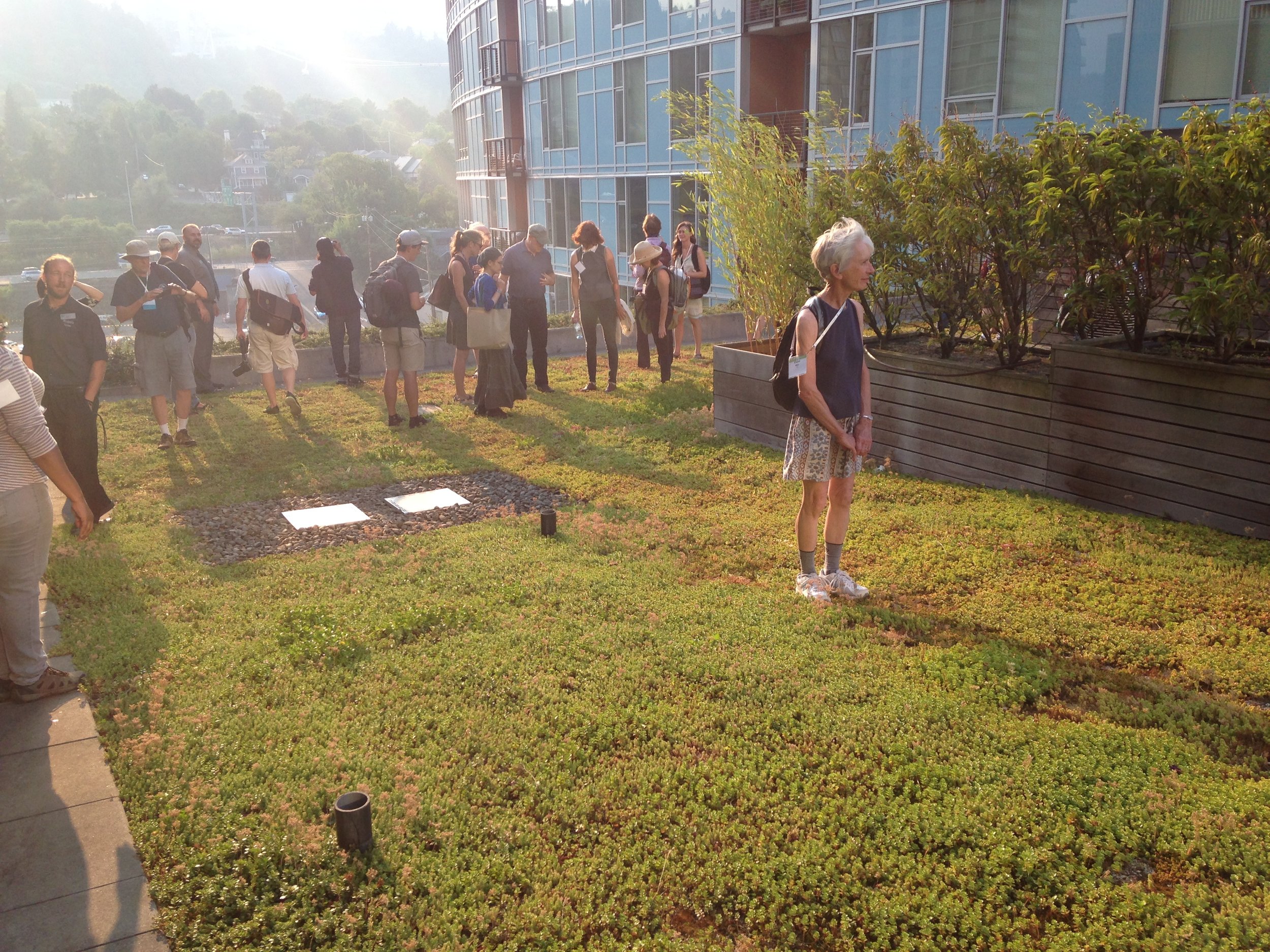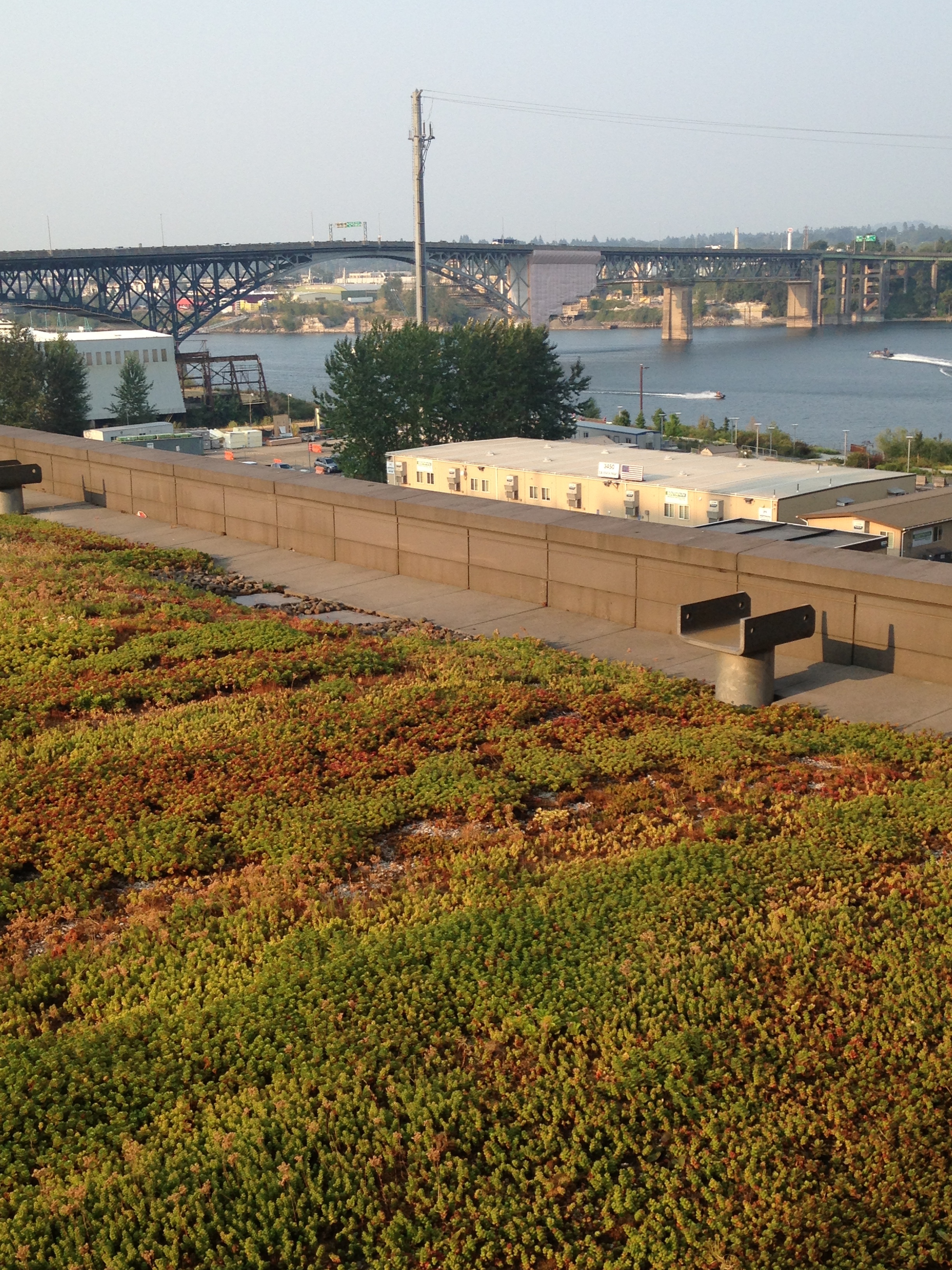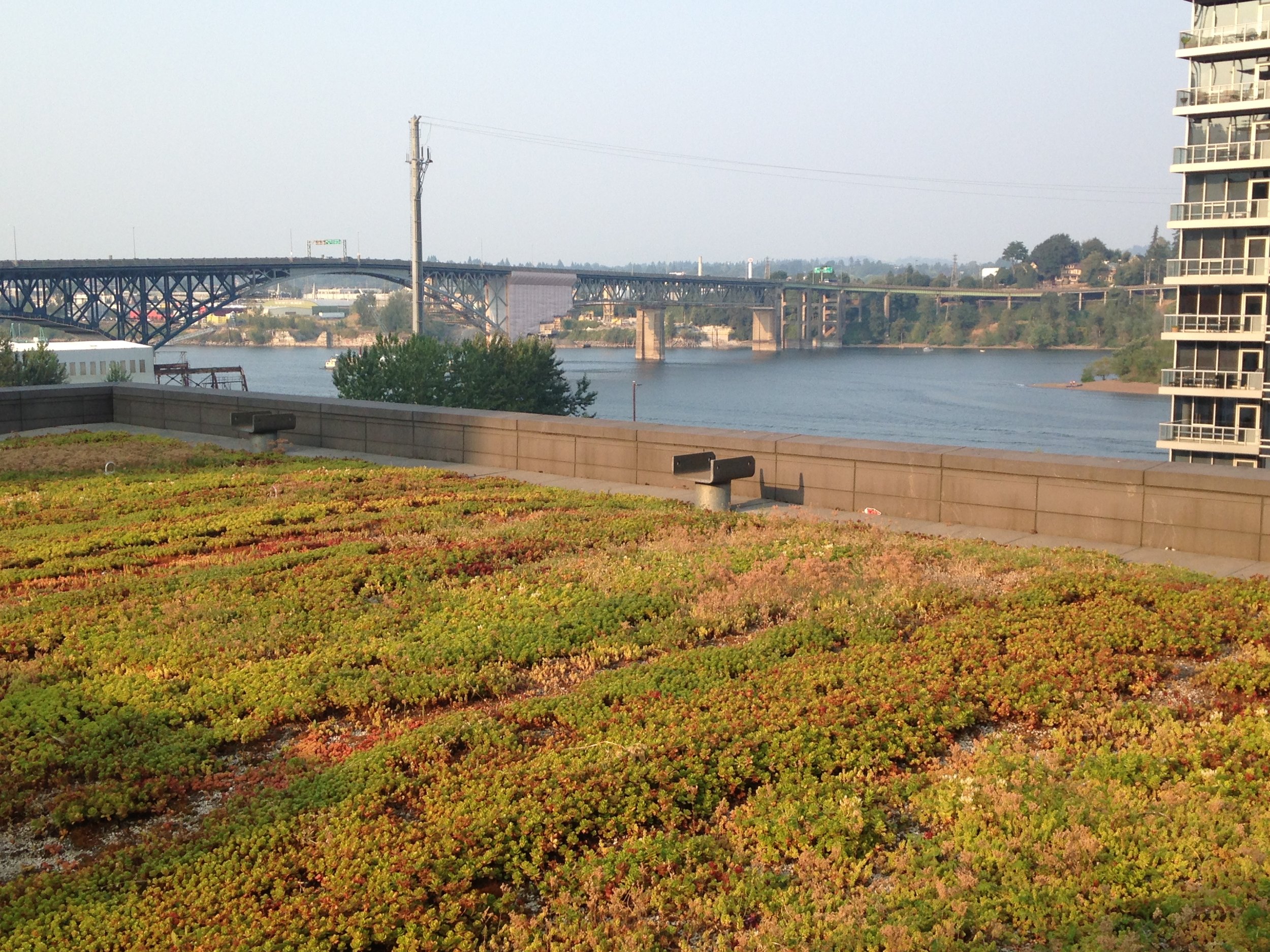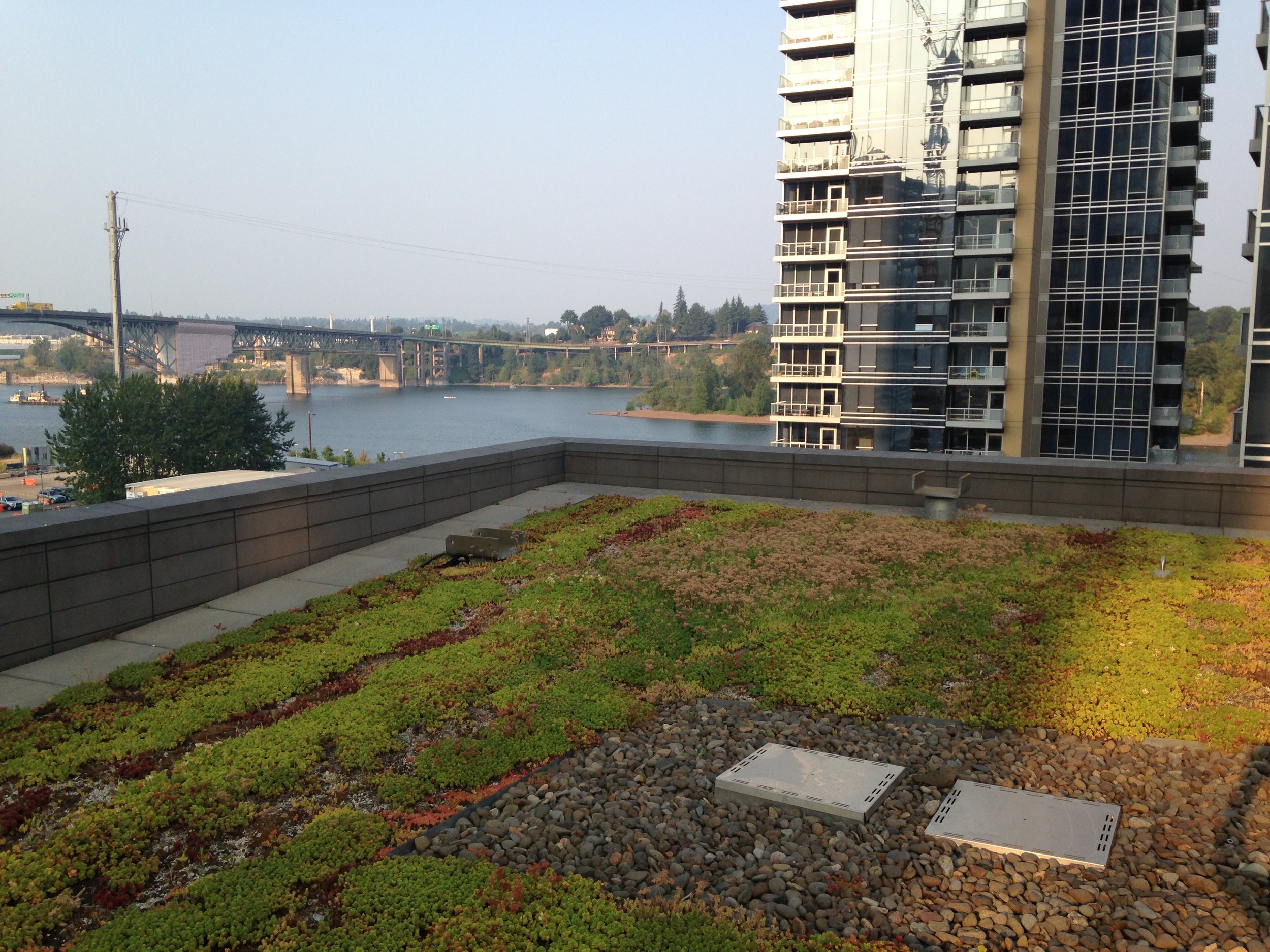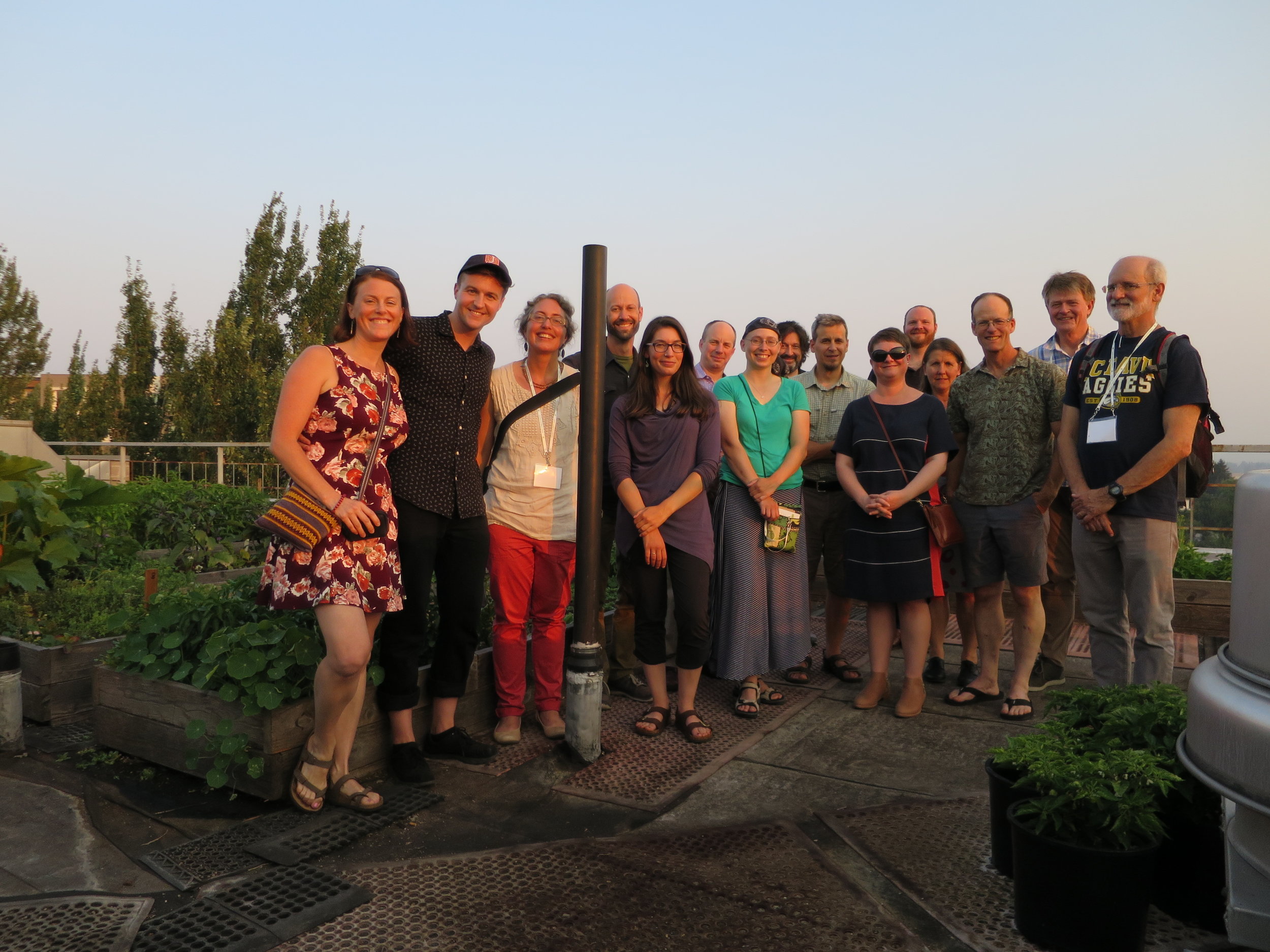Portland City Council held its first hearing for the Central City 2035 Recommended Draft on Thursday September 7th. The Recommended Draft sets several goals and policies for Portland, including many that support the advancement of green roofs in the Central City. In particular, the Recommended Plan includes a green roof requirement for new development with 20,000 square feet of total floor area.
The process is a culmination of the City's work over the last few years to collect input from stakeholders, evaluate recommendations, and compile them into a document that will guide the long-range vision for the Central City. GRIT submitted testimony last year to the Portland Planning and Sustainability Committee to show support for the green roof requirement, and submitted written testimony last week. GRIT members were in attendance at last week's hearing to provide oral testimony, but time ran out. Council expects to continue with oral testimony at the next hearing tomorrow, Thursday, September 14th from 2-5:30PM. Additionally, written testimony will be accepted until 5pm on Friday, September 15th.
We encourage all GRIT members to submit written testimony if they feel inclined. We've pasted the written testimony below for individual members to borrow from should they be inclined to submit their own.
You can submit written testimony:
By Email
Send an email to cc2035@portlandoregon.gov
Subject: CC2035 Testimony
By U.S. Mail
Portland City Council c/o Bureau of Planning and Sustainability, 1900 SW 4th Ave., Suite 7100, Portland, Oregon 97201 Attn: CC2035 Testimony
-----------------------------------------------------------------------------
September 3, 2017
Portland City Council c/o Bureau of Planning and Sustainability
1900 SW 4th Ave., Suite 7100
Portland, Oregon 97201
Attn: CC2035 Testimony
Dear Portland City Council,
On behalf of the Green Roof Information Think-tank (GRiT), we write to applaud the efforts of the City of Portland to develop the Central City 2035 Plan. The Plan is far-reaching and innovative, and when implemented, it will result in an even more vibrant and livable downtown. We also offer our strong support for the ecoroof requirement in the CC 2035 plan (33.510.243).
Rooftops are an overlooked and under-utilized resource, and they greatly impact the public realm. As Portland becomes more densely developed we need to use all available space, and rooftops present many opportunities. Ecoroofs, also called green or vegetated roofs, are rooftops covered in a thin layer of soil and vegetation, and are considered by the EPA as one of the top 5 Low Impact Development methods for storm water management. But they are far more than on-structure stormwater treatment facilities. Ecoroofs provide many economic, environmental, and human health benefits, while saving building owners money by significantly extending the service life of the roofing. Portland can continue developing with antiquated roofing approaches, or we can embrace green roof technology and gain all the benefits they provide, and re-establish Portland as an international leader in urban sustainability.
The value of green roofs in helping maintain health and livability in denser urban neighborhoods cannot be overstated. The proposed Comprehensive Plan recognizes this by envisioning a new relationship between the built and natural environment in Portland. Throughout its proposed goals and policies, the new Comp Plan calls for a rich, intimate, and daily human connection to nature in order to foster improved public health and sense of place for all Portlanders while improving air and water quality, and native biodiversity. Ecoroofs are essential to achieving all of these goals in our most dense neighborhoods.
GRiT is fully supportive of the CC2035 ecoroof requirement. We offer the following suggestions to strengthen the requirement so that we realize the full benefits ecoroofs provide:
Change the threshold at which the requirement applies from 20,000 net square feet to 5,000 net square feet, and increase the required ecoroof coverage from 60 percent of the remaining roof area to 100 percent.
Many of the functions of ecoroofs, particularly in combating urban heat island, increase considerably with ecoroof square footage. To fully gain the benefits, coverage must be as wide as possible. Portland is a city of modestly-sized buildings, and we have few large structures on the order of NYC, Chicago, or WA DC. Currently, the requirement only applies to buildings greater than 20,000 net square feet. This threshold will significantly limit the number of ecoroofs in the Central City, further curbing the cumulative landscape-scale benefits of installing ecoroofs on numerous downtown buildings.
The current language requires the ecoroof to cover only 60 percent of the remaining roof after the exemptions have been deducted from the roof area (such as for skylights and mechanical equipment). Limiting the required coverage could result in tiny ecoroofs that provide little benefit, and roofing only partially covered by plants. Exposed roofing alongside green roofing negates the extended lifecycle potential of the roof membrane, unless curbed or covered by gravel or pavers – adding costs and major weight loads without the benefits of planted areas.
A properly designed and installed green roof will far outlast exposed roofing, so unless there is some other proposed use for the roof area, it is of benefit to the building owners and surrounding environment to fully cover their roofs in vegetation. Rooftop space is too valuable to the public realm to be left underutilized.
Remove the Solar Exemption
There is no need for a solar exemption. Ecoroofs and photovoltaic systems are mutually beneficial. When they occupy the same space, the panels can function much more efficiently because they are cooled by the evaporation of water from the plants and soil. Our own Portland State University researchers have demonstrated this. Combining solar and ecoroofs is not new in Portland, we have many buildings that successfully placed their solar panels within the green roof area, including Portland’s historic EcoTrust Building, the Ramona Apartments, the International Harvester Building, the East Multnomah County Courthouse, and the Vestas headquarters building.
Portland has a history of supporting ecoroofs. Until recently, that support led to Portland’s international reputation as a leader in the green roof industry. In 1999 the City of Portland was the first in the nation to recognize green roofs as a sustainable stormwater approach with the adoption of the City’s first Stormwater Management Manual. In 2001 Portland included ecoroofs as an FAR Bonus option for a new urban design sustainability approach. Portland was the first city in the USA to include ecoroof incentives in its planning regulations and set the pace beyond any other US city in 2008 with the adoption of a five-year direct ecoroof incentive program. The program also helped build the local green roof industry.
However, Portland’s leadership has waned and now Washington DC, Chicago, Seattle, San Francisco, Philadelphia, and New York City are touted as models of green roof incentives and regulations. Even smaller cities such as Milwaukie WS, Nashville TN, Devens MA, and Syracuse NY have green roof incentives and/or requirements.
Still, Portland building owners and developers continue to use this natural solution to reduce on-site storm water hassles, and attract more building occupants. More than 300 hundred green roofs blanket Portland’s rooftops and they continue to grow. Green roofing affects many industries, from growing the plants and designing the landscapes, to installing and maintaining the systems. As the voice of a wide range of businesses, researchers and community residents impacted by green roofing, GRiT requests the full support of our municipal leadership for this simple, high-impact solution to so many of our urban concerns.
The most successful efforts to expand ecoroofs in Europe and North America have first established incentives and then transitioned to ecoroof requirements as the local ecoroof industry expands and installation costs come down. Portland is ready for a robust and effective green roof requirement.
Thank you for the opportunity to provide comments on the draft Central City 2035 Plan. We would be happy to provide additional technical information and data. Please feel free to contact me with any questions or for more information.
---------------------------------------------------
Thanks to all the GRIT members that helped craft testimony!

